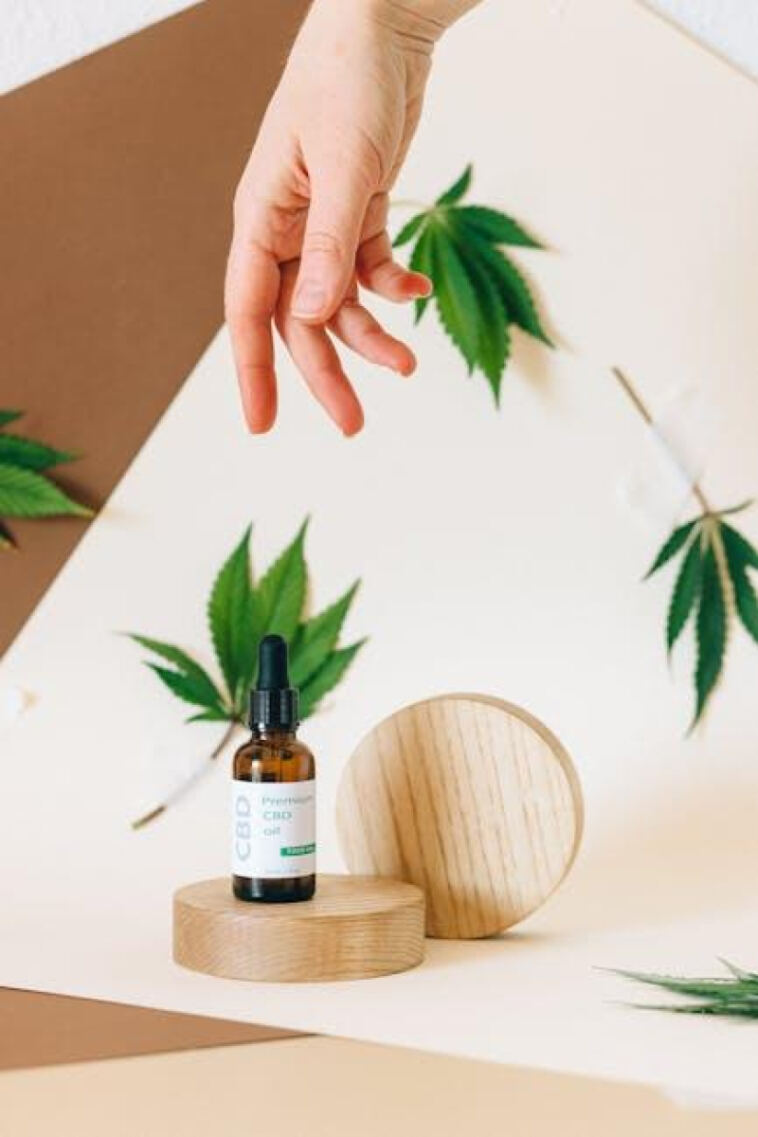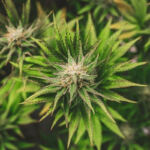- Like
- SHARE
- Digg
- Del
- Tumblr
- VKontakte
- Flattr
- Buffer
- Love This
- Save
- Odnoklassniki
- Meneame
- Blogger
- Amazon
- Yahoo Mail
- Gmail
- AOL
- Newsvine
- HackerNews
- Evernote
- MySpace
- Mail.ru
- Viadeo
- Line
- Comments
- Yummly
- SMS
- Viber
- Telegram
- JOIN
- Skype
- Facebook Messenger
- Kakao
- LiveJournal
- Yammer
- Edgar
- Fintel
- Mix
- Instapaper
- Copy Link
In the world of CBD products, quality is key. From oils to edibles to topicals, consumers are seeking out the best of the best when it comes to their CBD experience. But with a flood of products on the market claiming to be high-quality, how can you ensure that you’re truly getting what you pay for? Cracking the code on CBD quality is essential for both consumers and businesses alike. Let’s dive into this intricate world and uncover the secrets to guaranteeing top-notch CBD products.
Unveiling the Importance of Third-Party Testing
When it comes to ensuring the quality of CBD products, third-party testing plays a crucial role in providing transparency and accountability. By having independent labs test CBD products, consumers can have peace of mind knowing that what they are purchasing is safe and effective. These tests can unveil important information about the product, such as the potency of the CBD, the presence of any contaminants, and the accuracy of the labeling.
One of the key benefits of third-party testing is that it helps to hold CBD manufacturers accountable for the quality of their products. By having an unbiased third-party conduct tests, companies are encouraged to maintain high standards and produce safe products. This level of transparency not only benefits consumers but also helps to build trust within the industry.
Furthermore, third-party testing can also help to distinguish reputable CBD brands from unreliable ones. By looking for products that have undergone third-party testing, consumers can make more informed decisions when choosing CBD products. This can ultimately help to weed out low-quality products and promote the growth of trustworthy brands in the market.
Key Factors to Consider When Evaluating CBD Brands
When evaluating CBD brands, it is crucial to consider several key factors that can help ensure the quality of the products you are purchasing. One important aspect to look at is the source of the CBD. Make sure the brand uses organically grown hemp that is free from pesticides and harmful chemicals. This will guarantee a purer and more potent product.
Another factor to keep in mind is the extraction method used by the brand. CO2 extraction is widely considered the safest and most effective method for obtaining CBD oil from the hemp plant. This process ensures that the final product is free from any residual solvents and maintains the beneficial compounds found in the plant. Look for brands that clearly state their extraction methods on their packaging or website.
Additionally, it is essential to check for third-party lab testing results when evaluating CBD brands. These tests provide an unbiased evaluation of the product’s cannabinoid content and purity. Brands that make these results easily accessible demonstrate transparency and accountability. By considering these key factors, you can crack the code to finding high-quality CBD products that meet your needs and expectations.
| Key Factors | Consideration |
|---|---|
| Source of CBD | Organically grown hemp |
| Extraction Method | CO2 extraction |
| Lab Testing | Third-party testing results |
Deciphering the Certificate of Analysis (COA)
When it comes to purchasing CBD products, understanding the Certificate of Analysis (COA) is essential for ensuring the quality and safety of the product. The COA is a document provided by a third-party laboratory that outlines the chemical composition of the product, including the levels of cannabinoids, terpenes, and potential contaminants.
One of the key components of the COA is the cannabinoid profile, which shows the levels of various cannabinoids present in the product. CBD (cannabidiol) is typically the most prominent cannabinoid, but other cannabinoids like THC (tetrahydrocannabinol) and CBG (cannabigerol) may also be present. It’s important to check that the levels of THC are below the legal limit of 0.3% to ensure the product is legal and won’t cause psychoactive effects.
Additionally, the COA will often include tests for heavy metals, pesticides, and other contaminants that could be present in the product. These test results should show that the product meets safety standards and is free from harmful substances. By deciphering the COA, consumers can make informed decisions about the quality of the CBD products they are purchasing.
Maximizing CBD Quality Through Good Manufacturing Practices
is essential in ensuring the effectiveness and safety of CBD products. By following strict guidelines and regulations, manufacturers can guarantee that their products are of the highest quality and free from contaminants. This helps to build trust with consumers and ensures that they are getting a reliable and consistent product every time they purchase.
One key aspect of ensuring CBD quality is the extraction process. Utilizing high-quality extraction methods, such as CO2 extraction, helps to preserve the purity and potency of the CBD. This process ensures that the final product is free from harmful solvents and chemicals, providing consumers with a clean and safe CBD experience. Additionally, proper storage and packaging techniques are crucial in maintaining the quality of CBD products, as exposure to light, heat, and air can degrade the cannabinoids and reduce their effectiveness.
Another important factor in maximizing CBD quality is third-party testing. By sending products to independent labs for analysis, manufacturers can verify the potency and purity of their CBD products. This transparency ensures that consumers are getting exactly what they pay for and helps to weed out low-quality products in the market. By implementing good manufacturing practices throughout the entire production process, manufacturers can crack the code to ensuring CBD quality and provide consumers with safe and effective products.
Ensuring Transparency in Sourcing and Extraction Methods
When it comes to ensuring transparency in CBD sourcing and extraction methods, cracking the code for quality is essential. Consumers deserve to know exactly where their CBD products come from and how they are made. This commitment to transparency builds trust and confidence in the products they are using.
One way to guarantee transparency is by partnering with suppliers who prioritize ethical and sustainable sourcing practices. By working with suppliers who value transparency and quality, we can ensure that the CBD products we offer are of the highest standard. This not only benefits consumers but also supports responsible and environmentally friendly practices in the industry.
Utilizing third-party lab testing is another crucial step in ensuring transparency in CBD quality. By independently testing our products, we can provide concrete evidence of their potency and purity. This information is then made readily available to consumers, demonstrating our commitment to honesty and integrity in every step of the sourcing and extraction process.
Q&A
Q: Why is it important to ensure the quality of CBD products?
A: Ensuring CBD quality is important to guarantee safety and effectiveness for consumers.
Q: How can consumers distinguish a high-quality CBD product from a low-quality one?
A: Look for transparent labeling, third-party lab testing, and reputable brands to identify high-quality CBD products.
Q: What are some common ways in which CBD products can be adulterated?
A: CBD products can be adulterated through the addition of contaminants, lower CBD content than advertised, or mislabeling.
Q: What steps can manufacturers take to maintain the quality of their CBD products?
A: Manufacturers should follow good manufacturing practices, conduct regular testing, and source high-quality ingredients to maintain the quality of their CBD products.
Q: How can regulatory bodies ensure the quality of CBD products in the market?
A: Regulatory bodies can enforce strict quality control standards, conduct regular inspections, and impose penalties on non-compliant manufacturers to ensure the quality of CBD products in the market.
In Retrospect
In conclusion, decoding the world of CBD quality can seem like a daunting task, but armed with the right knowledge and techniques, consumers can confidently navigate the market with ease. By understanding the factors that influence CBD quality and taking the necessary steps to ensure transparency and accountability from brands, everyone can enjoy the benefits of this powerful compound. So remember, when it comes to CBD, cracking the code is not just about finding a high-quality product, but also about empowering yourself to make informed choices for your health and well-being.


